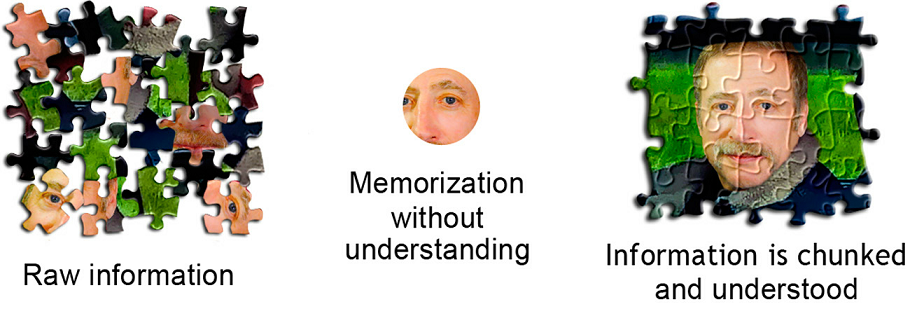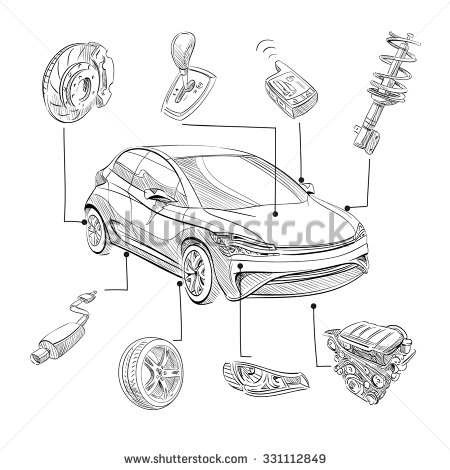The Significance of Incremental Reading in SuperMemo: Part I

Image by Free-Photos from Pixabay
Quick Terminology Recap
SRS = Spaced Repetition Software
SuperMemo is the one from super-memo.com; NOT the courses, mobile app, application from supermemo.com. They are different.
Items in SuperMemo = Cards in Anki; IR = Incremental Reading
Introduction
You want to learn new things, and you want to remember the things you learned. SuperMemo provides the perfect tool for learning and remembering:
Learning new things: through Incremental Reading
Remembering what you learned: through spaced retrieval practice (Q&As/clozes)
According to “Self-Regulated Learning: Beliefs, Techniques, and Illusions":
Creating durable and flexible access to the information is a matter of:
A. Achieving a meaningful encoding
B. Exercising the retrieval process
Spaced retrieval practice is only half the story for effective and efficient learning. Anki can do it perfectly, regardless of the efficiency of the algorithm. Another half is Incremental Reading. IR can tremendously help with achieving meaningful encoding. This is what Anki can’t emulate and replace. I know this is probably an unjust remark because Anki probably never intended to help with learning new things.
Regardless, learning and remembering are inextricably interwoven. Generally speaking, you can’t remember if you haven’t learned it; if you don’t learn you have nothing to remember. A clear cut between learning and remembering is not useful.
My First Failed Encounter with Incremental Reading
When I was still using Anki, I remember trying the Incremental Reading addon
I googled Incremental Reading. As expected, the results were mostly from the official websites. The articles were lengthy and technical. Nothing seemed to be written by users.
Result? I still couldn’t figure out exactly what it was. All I knew was that there were some SuperMemo users touting and raving about the benefits of IR and I had no idea why.
Funny how things turned out: now I am one of those diehard SuperMemo users who would say “I can’t live without IR”:

From this blog post:
I use the incremental reading feature for reading long, complicated documents, and it’s world’s better than any other method I’ve tried. (And with a PhD in Mathematics, I’ve certainly studied my share of documents!) It forces you to read the important bits very carefully–but still saves you time by helping you to ignore the less important bits. I can’t recommend it highly enough. In fact, I’d give my left arm to get a Palm application which supports incremental reading!
Damn. I can’t believe someone in this world made a similar analogy like I did in an email I wrote earlier:

My Explanation of Incremental Reading
The way I understand it, Incremental Reading = Spaced Reading.
do not mean the same “moment of time” but the same “period of time”.
Spaced repetition is one of the keys to better memory and comprehension. Generally speaking, everything is better with spaced repetition.
For example, I’m reading a paper on Shallow Processing vs. Deep Processing:
|
|
During IR, I first read the first paragraph. I extract important sentences (keywords and definitions, ideas), make clozes out of them, then I stop.
Then, the next day (arbitrary), SuperMemo would present me the clozes from the article. I will do the repetitions.
Then a few days later (again, arbitrary), SuperMemo would show me the article again, and I will process the 2nd paragraph onward like I did with the 1st paragraph (extracting, making Q&A/clozes)
Why Would You Want to Read This Way?
If you’re completely new to the idea of “Deep processing”, it’s highly undesirable to read the whole paper in one go. Why? Because you have yet acquired the basic ideas. When you’re reading about the experiments in the 2nd and 3rd paragraph, you probably don’t understand why they were done that particular way and thus, a lot won’t make much sense to you. It’s the same with implication and conclusion: how could you understand the implication when you’re still figuring out the basic idea of the depth of processing?
Analogies: Building a City, Puzzle and LEGO Car
You should lay the foundation before further processing.
In SuperMemo, the analogy is Jigsaw puzzles:
For a good model of the world, we need to assemble little pieces of knowledge into a coherent structure.
You can’t put a piece before some other crucial piece(s). It’s like you can’t learn calculus without first learning algebra.
In “A Mind for Number” , the analogy is, too, building puzzles:

When you first look at a brand-new concept in science or math, it sometimes doesn’t make much sense, as shown by the puzzle pieces above on the left. Just memorizing a fact (center) without understanding or context doesn’t help you understand what’s really going on, or how the concept fits together with the other concepts you are learning—notice there are no interlocking puzzle edges on the piece to help you fit into other pieces. Chunking (right) is the mental leap that helps you unite bits of information together through meaning. The new logical whole makes the chunk easier to remember, and also makes it easier to fit the chunk into the larger picture of what you are learning.
The book Make It Stick has this analogy of building a city:
The theory of structure building bears some resemblance to a village built of Lego blocks. Suppose you’re taking a survey course in a new subject. You start with a textbook full of ideas, and you set out to build a coherent mental model of the knowledge they contain. In our Lego analogy, you start with a box full of Lego pieces, and you set out to build the town that’s pictured on the box cover. You dump out the pieces and sort them into a handful of piles.
First you lay out the streets and sidewalks that define the perimeter of the city and the distinct places within it. Then you sort the remaining pieces according to the elements they compose: apartment complex, school, hospital, stadium, mall, fire station. Each of these elements is like a central idea in the textbook, and each takes more shape and nuance as added pieces snap into place. Together, these central ideas form the larger structure of the village.
Now suppose that your brother has used this Lego set before and dumped some pieces into the box from another set. As you find pieces, some might not fit with your building blocks, and you can put them aside as extraneous. Or you may discover that some of the new pieces can be used to form a substructure of an existing building block, giving it more depth and definition (porches, patios, and back decks as substructures of apartments; streetlights, hydrants, and boulevard trees as substructures of streets). You happily add these pieces to your village, even though the original designers of the set had not planned on this sort of thing.
A simpler analogy might be a friend who wants to tell you a rare story about this four-year-old boy she knows: she mentions who the mother is, how they became friends in their book club, finally mentioning that the mother, by coincidence, had a large load of manure delivered for her garden on the morning of the boy’s birthday—the mother’s an incredible gardener, her eggplants took a ribbon at the county fair and got her an interview on morning radio, and she gets her manure from that widowed guy in your church who raises the Clydesdale horses and whose son is married to—and so on and so on. Your friend cannot winnow the main ideas from the blizzard of irrelevant associations, and the story is lost on the listener. Story, too, is structure.
You need to “identify foundational concepts and their key building blocks and to sort new information based on whether it adds to the larger structure and one’s knowledge or is extraneous and can be put aside.” This also illustrates that learning is highly personal: For the same thing (analogy, explanation, story etc), I can’t guarantee what helped me understand will help you understand as well.
Knowledge Structure Building with Incremental Reading
My analogy is building a LEGO car. I think such analogy is helpful in explaining IR. These analogies (city, puzzle, car) are fundamentally equivalent (knowledge structure-building).

According to 20 rules of Formulating Knowledge, you should build upon the basics. With IR, you’re building parts (wheels, car frame, engine, seats) before assembling the whole car. The building parts are your basic understanding of the article: keywords, definitions, and a few examples already in mind. They serve to help you understand the main idea(s) and the big picture. With the parts ready, you can assemble the car much more easily.

Going back to the example above, when I first processed the 1st paragraph, I learned the definitions and keywords. Understanding them BEFORE proceeding to subsequent paragraphs helps tremendously with comprehension. Why? Since I already have a basic understanding of the whole article, I don’t have to think about the meaning of definitions, keywords and etc (i.e. wasting working memory); I can focus on understanding the main ideas. I can put all my focus on how the target knowledge: How the experiments (2nd and 3rd paragraph) are used to show the superiority of deep processing comparing with shallow processing. This higher-order thinking can only happen when I’m not still struggling with the basics.
Normally, with traditional reading, you will read the whole article from start to finish. This is like building the LEGO car from scratch with LEGO bricks. Of course, you can read (build) it this way, but it’s easier to have various parts ready before assembling them. With IR it’s much easier to get the most out of the article (synthesis of ideas, deeper understanding) and with the time spent (5 hours in one setting vs. 1 hour each day spread across 5 days).
Another Example
The following reading material is from the book “Principles of Economics”
1st paragraph:
2nd paragraph:
When I first read these two paragraphs, I had a hard time understanding the 2nd paragraph because I still hadn’t fully figured out/memorized the basic ideas from the 1st paragraph. When reading the 2nd paragraph, I was constantly asking myself questions like “What are positive statements again?”
With IR, I would extract the whole 2nd paragraph, read it again after I’ve reviewed the basics from the 1st paragraph.
So, in the following 7 days:
Day 1-6: make and review items from the 1st paragraph, such as:
|
|
Clozes:
|
|
After drilling the basics for 6 days, during the 7th day, when I read the 2nd paragraph after, I will surely have a much easier time understanding the concepts. Why? Because I’ve already laid the foundation, thus freeing up the working memory for comprehension.
Closing Remarks
This is currently the best video on getting started with Incremental Reading: Starting with SM Going through the IR Manual. Also, the following videos probably made by Woz, the creator of SuperMemo himself:
Learning history of World War 2 with incremental reading
Incremental reading: Nutrition from Wikipedia (SuperMemo 17)